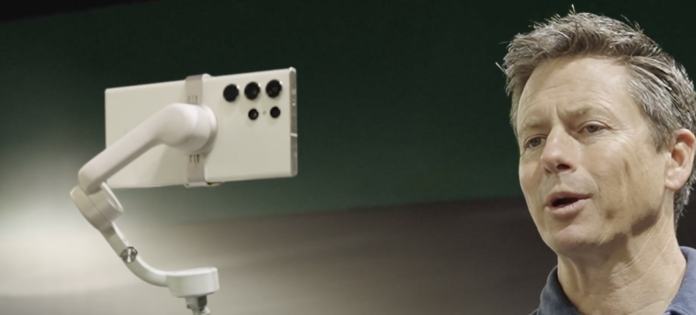Verizon put 5G network slicing through its paces as part of its support of last weekend’s Formula 1 Last Vegas Grand Prix racing event. The carrier said that the technology “showed exceptional performance for streaming content in a high data-usage environment.”
Verizon said that over the course of the multi-day event, more than 100,000 attendees used its network for uploads, consuming 79.3 TB of data. Meanwhile, Verizon engineers created a network slice that enabled a Verizon beta application called Mobile Creator Studio, which enabled specific high-profile content creators to livestream high-definition video about race-related events and festivities and maintain a high-quality connection. Race car driver Lando Norris used a Verizon 5G device to give a tour of the McLaren garage, and McClaren driver and social media influencer Tanner Faust recorded a demo video (watch below) of himself doing live HD video streaming while explaining network slicing, as he walked the streets of Las Vegas.
“Throughout this demo, despite record-breaking data usage on the Verizon network, the network slice provided the low-latency, high-throughput mobility service needed for reliable, responsive live streaming of the event,” Verizon said in a release.
Phillip French,VP of engineering and operations at Verizon, said that the company’s 5G network is “built specifically to manage crowded events, providing reliability and massive capacity so customers can capture, share and connect throughout the experience.” Verizon said that its engineers have been working on upgrades and enhancements to the area where the race was held over the last few years, in preparation for the event.
Verizon noted that in Vegas, it is leveraging both its C-Band holdings and high-performance millimeter wave spectrum. Verizon announced in mid-August that it had turned up its full 160 megahertz of C-Band airwaves in Las Vegas, nearly tripling its 5G spectrum capacity in the metro area. In addition to serving Verizon customers across the city and throughout “key hotels”, the carrier noted that C-Band was used throughout the area where the race events took place, including throughout the grandstand, along the track and in the paddock area. Verizon also deployed a new, fully-equipped 4G/5G cell site at the Harry Reid airport.
Millimeter wave was in used in high-demand areas, which Verizon said included the Las Vegas Strip, Fremont Street, the Bellagio grand stand and VIP areas, and on small cell towers that covered the main entrance to the event. Additional, temporary cell sites were also used to bolster coverage, capacity and performance at the entrance, stages, grandstand and VIP areas, as well as the Henderson executive airport, the carrier added.
Verizon had previously announced successful testing of network slicing in June of this year.

